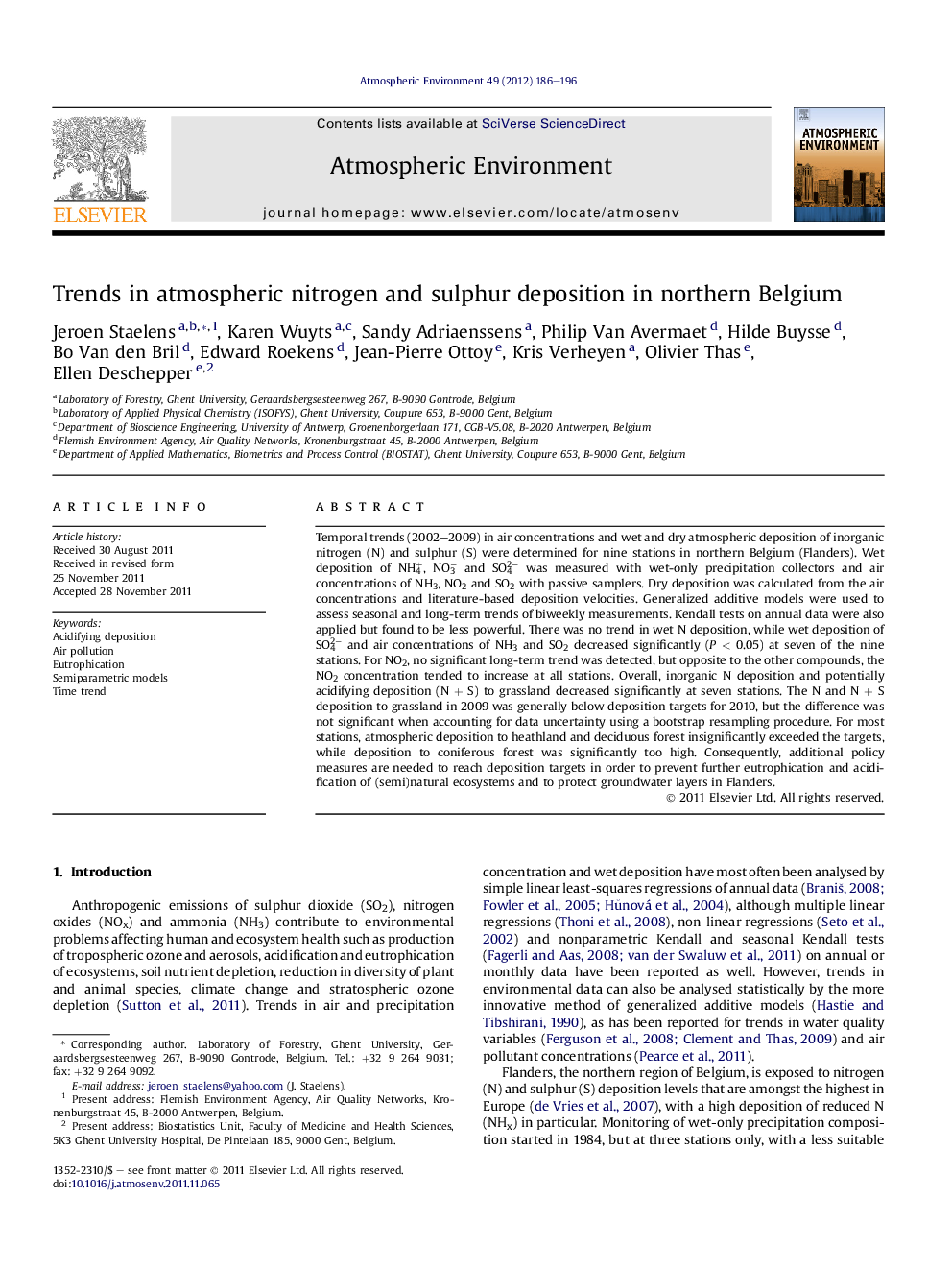| Article ID | Journal | Published Year | Pages | File Type |
|---|---|---|---|---|
| 4439077 | Atmospheric Environment | 2012 | 11 Pages |
Temporal trends (2002–2009) in air concentrations and wet and dry atmospheric deposition of inorganic nitrogen (N) and sulphur (S) were determined for nine stations in northern Belgium (Flanders). Wet deposition of NH4+, NO3− and SO42− was measured with wet-only precipitation collectors and air concentrations of NH3, NO2 and SO2 with passive samplers. Dry deposition was calculated from the air concentrations and literature-based deposition velocities. Generalized additive models were used to assess seasonal and long-term trends of biweekly measurements. Kendall tests on annual data were also applied but found to be less powerful. There was no trend in wet N deposition, while wet deposition of SO42− and air concentrations of NH3 and SO2 decreased significantly (P < 0.05) at seven of the nine stations. For NO2, no significant long-term trend was detected, but opposite to the other compounds, the NO2 concentration tended to increase at all stations. Overall, inorganic N deposition and potentially acidifying deposition (N + S) to grassland decreased significantly at seven stations. The N and N + S deposition to grassland in 2009 was generally below deposition targets for 2010, but the difference was not significant when accounting for data uncertainty using a bootstrap resampling procedure. For most stations, atmospheric deposition to heathland and deciduous forest insignificantly exceeded the targets, while deposition to coniferous forest was significantly too high. Consequently, additional policy measures are needed to reach deposition targets in order to prevent further eutrophication and acidification of (semi)natural ecosystems and to protect groundwater layers in Flanders.
► First reported time trends of atmospheric N and S deposition in Flanders (Belgium). ► Wet deposition and air concentrations measured at nine stations during 8 years. ► Trend analysis with generalized additive models. ► Deposition declined significantly for SOx and NHx, but not for NOy. ► Long-term (2030) targets and critical loads are still significantly exceeded.
